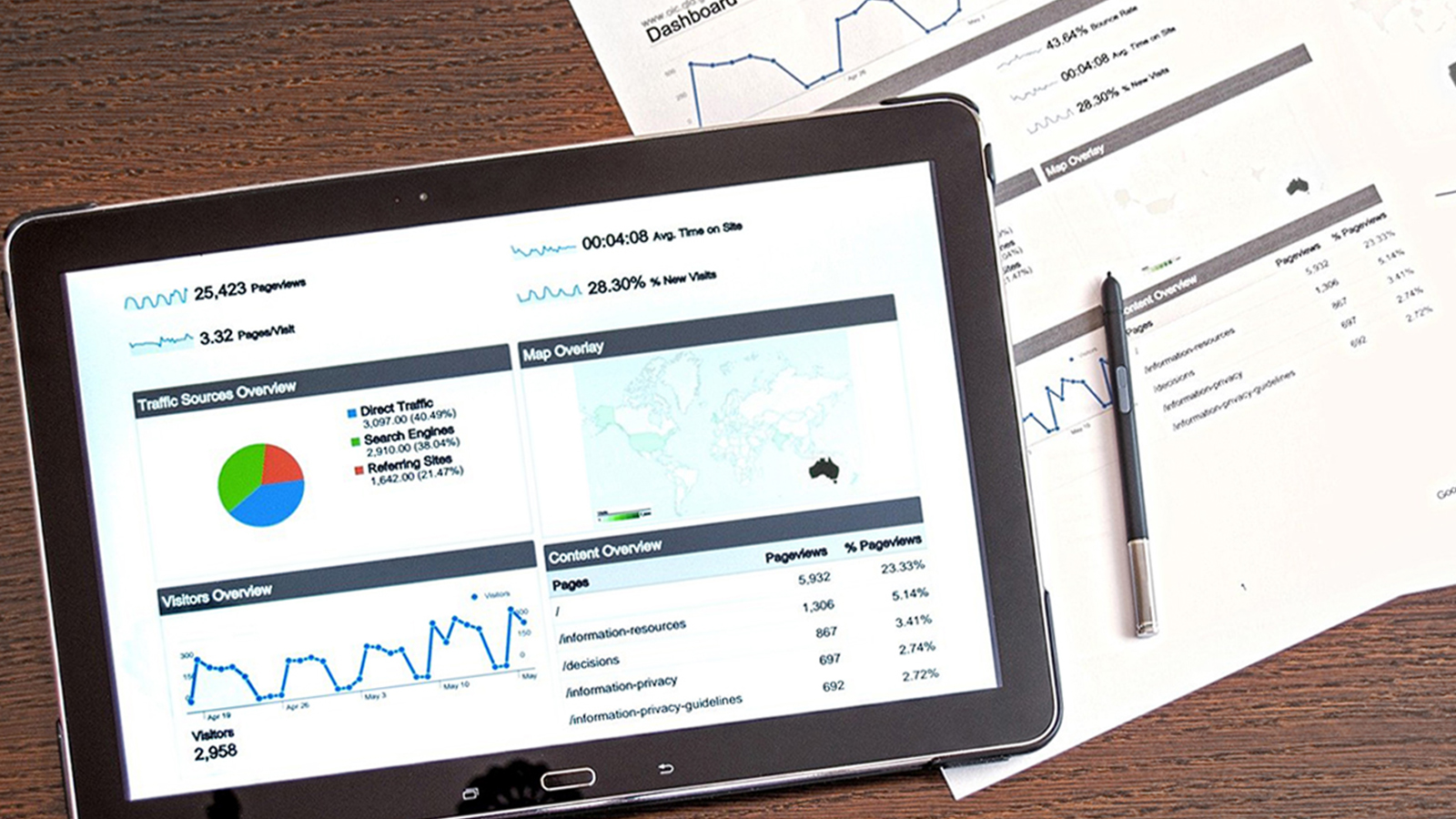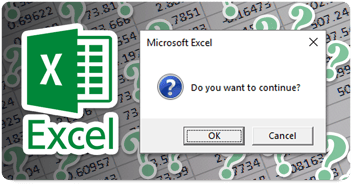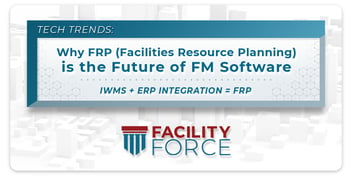Over a decade ago, the debate over the effectiveness of facility management software ended. Digital software solutions provide greater accuracy and better record-keeping abilities than paper-based systems. The question is no longer whether to use software for facilities management, but which software solution is the best fit for your organization.
Today, solutions range from individual point systems (such as CMMS, CAFM, and EAM) to comprehensive Integrated Workplace Management Systems (IWMS), to what we offer as Facilities Resource Planning (FRP). Decisions now revolve around selecting the best software solution for managing your facility. On the surface, IWMS software often seems like the most expensive path. With a plethora of options available, how do you justify the cost of a comprehensive solution?
Table of Contents:
- Cheapest Isn't always Best
- IWMS/FRP Software
- Why Choose an IWMS?
- The Future of Facility Management
- IWMS VS FRP
- Conclusion
Why the Cheapest Option Isn't Always the Best
It might seem inexpensive to use a mix of homegrown spreadsheets and point solutions. However, convincing the financial team to invest in a comprehensive system can be challenging. Yet, IWMS systems (as well as FRP) offer a host of benefits and significant cost savings to your organization.
The All-in-One Solution: IWMS/FRP Software
Integrated Functionality: IWMS/FRP software provides a one-stop solution, preventing the duplicative data and miscommunications common with point systems. With an integrated solution, you can rely on one system to:
- Report issues
- Assign staff to fix problems
- Analyze space and utility usage
- Manage projects
Consistency Across the Board: A singular system provides consistency at all levels. With one system, all modules have a unified look and similar workflow. This results in:
- Shorter training times for new staff
- Easier establishment of best practices
- Smooth, efficient workflow
Streamlined Support: With one integrated system, you have one point of support for all facility management software needs. This gives you:
- A single point of contact for all software issues
- A strong relationship with your support team
- The ability to solve multiple problems with one phone call
Cost-Effectiveness: An integrated system generally costs less than purchasing multiple point solutions in the long run. Benefits include:
- Purchasing one system, and only one set of costs associated with it (training, implementation, etc.)
- Eliminating manual data entry, saving hundreds of man-hours
- Avoiding the need to develop and maintain costly integrations
Maintain internal and external consistency:
A singular system provides consistency at all levels. With one system, all modules have a unified look and similar workflow.
This results in:
- Shorter training times for new staff
- Easier establishment of best practices
- Smooth, efficient workflow
One support network for all systems:
With one integrated system, you have one point of support for all facility management software needs.
This gives you:
- A single point of contact for all software issues
- Relationship with your support team
- Multiple problems can be solved with one phone call
Cost Effectiveness:
An integrated system generally costs less than purchasing multiple point solutions in the long run.
- Purchase one system – and only one set of costs associated with the system (training, implementation, etc.)
- Eliminate manual data entry – saving hundreds of man hours
- Eliminate the need to develop and maintain costly integrations
Why Choose an IWMS?
Integrated Workplace Management Systems (IWMS) offer comprehensive capabilities that extend beyond simple facility management. Here's how an IWMS can revolutionize your organization:
1. Enhanced Decision-Making with Real-Time Data: IWMS provides real-time data and analytics, enabling informed decision-making. You can track asset performance, monitor energy usage, and manage space utilization effectively. This data-driven approach helps optimize resource allocation and reduce operational costs.
2. Improved Compliance and Risk Management: Regulatory compliance is crucial for facility management. An IWMS helps ensure adherence to industry standards by tracking and documenting compliance activities. This reduces the risk of non-compliance and associated penalties, providing peace of mind.
3. Scalable Solutions for Growing Organizations: As your organization grows, your facility management needs will evolve. IWMS solutions are scalable, accommodating increased assets, expanded facilities, and additional users. This flexibility ensures that your software grows with you, providing continuous support.
4. Enhanced Collaboration and Communication: IWMS fosters collaboration by centralizing information and streamlining communication. Teams can easily share data, coordinate tasks, and manage projects, leading to improved efficiency and reduced miscommunication.
5. Sustainable Practices and Energy Management: Sustainability is a growing focus for many organizations. IWMS solutions support energy management initiatives by tracking energy consumption, identifying inefficiencies, and promoting eco-friendly practices. This not only reduces energy costs but also aligns with corporate social responsibility goals.
The Future of Facility Management: Embracing FRP
While IWMS offers a comprehensive solution, Facilities Resource Planning (FRP) takes it a step further. FRP integrates facility management with broader resource planning, providing a holistic approach to managing your organization’s assets and resources.
1. Unified Resource Management: FRP systems consolidate all aspects of resource management, from facilities and assets to human resources and financials. This unified approach ensures that all resources are optimized and aligned with organizational goals.
2. Strategic Planning and Forecasting: FRP solutions facilitate long-term strategic planning by providing insights into resource utilization and future needs. This allows for proactive management, ensuring that your organization is prepared for growth and change.
3. Enhanced Financial Oversight: FRP systems integrate financial management with facility operations, providing a comprehensive view of costs and budgets. This integration enables better financial oversight, cost control, and investment planning.
4. Comprehensive Reporting and Analytics: FRP solutions offer advanced reporting and analytics capabilities, providing a deeper understanding of organizational performance. This data-driven approach supports continuous improvement and informed decision-making.
Making the Right Choice: IWMS vs. FRP
Choosing between IWMS and FRP depends on your organization’s specific needs and goals. Here are some factors to consider:
1. Scope of Management:
- IWMS: Ideal for organizations focused primarily on facility and workplace management.
- FRP: Suitable for organizations seeking a holistic approach that integrates facility management with broader resource planning.
2. Complexity and Scalability:
- IWMS: Offers robust solutions for complex facility management needs, with scalable options for growing organizations.
- FRP: Provides comprehensive resource planning capabilities, supporting strategic growth and long-term planning.
3. Financial and Resource Management:
- IWMS: Focuses on optimizing facility operations and reducing operational costs.
- FRP: Integrates financial management with resource planning, providing enhanced financial oversight and cost control.
Conclusion: The Path to Facility Management Success
In the dynamic landscape of facility management software, selecting the right solution is critical for organizational success. While IWMS offers comprehensive capabilities for facility and workplace management, FRP extends these capabilities to encompass broader resource planning.
Investing in an integrated solution like IWMS or FRP provides significant benefits, including enhanced efficiency, cost savings, improved decision-making, and better compliance. By carefully evaluating your organization’s needs and goals, you can choose the solution that best supports your path to facility management success.
As you embark on this journey, remember that the cheapest option isn’t always the most cost-effective. A comprehensive solution may require a higher initial investment, but the long-term benefits and savings will justify the cost, ensuring your organization’s growth and success.




